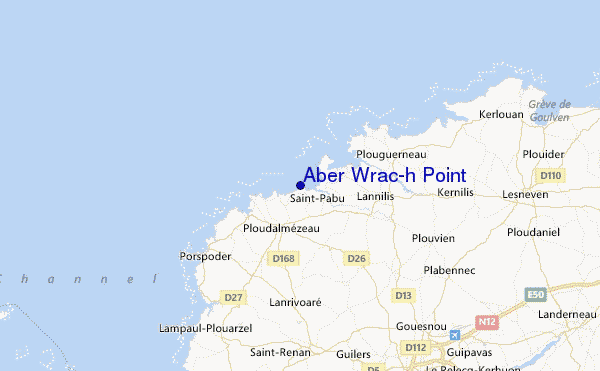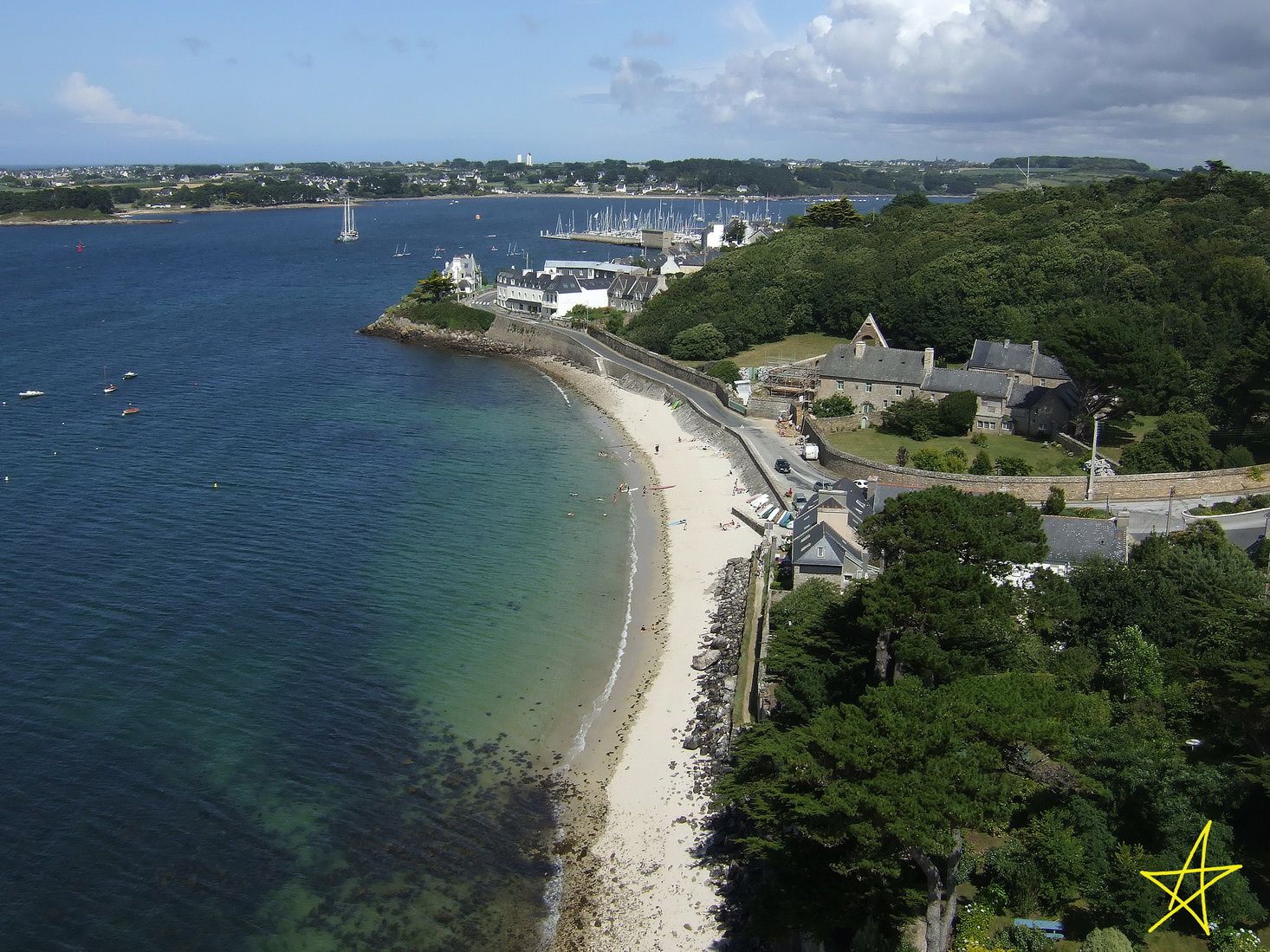Aber Wrac'h
Template: Infobox River / Obsolete
The Aber Wrac'h (also: But Vrac'h, Breton But Ac'h ) is a river in France, which runs in the department of Finistère in the Brittany region and forming on his mouth portion for several kilometers a Ria. In this opening section is influenced Wrac'h But already by the tides that.
But the rises in the municipality of Trémaouézan, north of Landerneau, drained generally in a north-westerly direction and joins after 33 kilometers between Landéda and Plouguerneau in the English Channel. Together with the But Ildut and the Aber Benoît But is the namesake of the Côte des Abers.
Places on the river
- Ploudaniel
- Le Folgoët
- Lanarvily
- Loc - Brévalaire
- Kernilis
- Lannilis
- Plouguerneau
- But Wrac'h, community Landéda
Harbor and sights
But Wrac'h also called a hamlet in the municipality of Landéda, around the harbor on the south shore of the estuary. This port is now used primarily by water sports enthusiasts.
East of the mouth before Lilia is the Ile Vierge, with its two lighthouses. The Great Lighthouse, built in 1902 is 82.5 m, the highest lighthouse in Europe and the highest stone lighthouse in the world. More Lighthouses in the mouth region are in Lanvaon and on the Île Wrac'h.
Another attraction is the Pont Krac'h ( Pont du Diable, Devil's Bridge ), a BC built in the 5th century bridge over the Aber Wrac'h. Built of stone blocks without binder building is the oldest bridge of Brittany. Today, she is only seen at low tide. Until the 1950s, a person working with tidal mill was operated on the bridge. The name Devil's Bridge comes from a legend that the devil himself had built the bridge.
From 1898 to 1940, there was a narrow- gauge railway, which in Plabennec of the route Brest - teed Saint- Pol-de -Léon, and the Wrac'h led over Lannilis to Landéda and on to the port of Aber. There, the route ended directly at the port. 1931 the replacement of this line was decided by bus service.









